Ios Ask for Push Notification Permission Again
Push notifications are the bread and butter of app marketing. They concur a huge potential to boost app engagement by providing valuable, personalised messaging, and they piece of work wonders for re-engaging lapsed customers. To have total advantage of this, information technology is of import to understand push notification best practices. But, for iOS users, there is one catch… Unless you are dealing with Android app users who are automatically opted into receiving button notifications (which tin can exist switched off in the settings section), your users have to give permission for you to access their information and transport push button notifications. Some apps actually depend on beingness able to access a phone's information and not getting that access can render the app useless. For example, an app that depends on knowing a user's location or i that relies on push notifications playing a critical role in getting the user to grade a habit of using your app. Related content: Video - The Best Practices for Push Notification Permissions In one case a user clicks 'Don't Allow' at this stage, then it'southward a washed deal. The only other style of reversing this is with a re-permissions campaign using other channels such as email or in-app messaging. Even so, this no longer becomes a 1 tap procedure and at present involves five painful steps as shown here by Twitter. This is a lot of effort for a smartphone user and is likely to significantly lower your chances of them opting back in. Techcrunch discusses the ii most common approaches used by mobile apps when asking for permission: 1. The Initial Blitzkrieg (not recommended) This occurs correct when a user opens the app for the first time and are blasted with "Tin can we admission your push notifications?", "Can we access your camera?", "Can we access your location?", "Can nosotros access your contacts?" Um, how about no? When a user isn't familiar with the ins and outs of an app and doesn't withal sympathize the value of providing information, and so the chances are, they are going to tap 'Don't allow'. The first version of the app Cluster took this approach and only about 30 - xl % of users opted in . 2. The Benefit Caption This approach works slightly meliorate than the first one, past explaining the benefits the user volition receive before popping the question. You can see how HayDay uses this method below. 5 iOS Push Notification Permission Best Practices Remember what I said earlier most merely getting one chance with the iOS dialogue? Well, hither's a clever little way effectually this. Pre-permission messages are the mobile marketer's life saver as at that place is no limit on the number of times yous can use them. This gives you the chance to design your own custom made in-app bulletin to approximate whether or not the user is ready to opt-in for existent to your push messaging. If your user says yes to your ain message and then you can go ahead and launch the iOS permission dialogue to get them to opt-in. If non, no biggie. Just don't launch the iOS dialogue and try once more at a later appointment when you lot feel your user is more engaged. Play it absurd. You wouldn't ask someone to marry you on a first date every bit that'due south a certain-burn down way to scare them off. So don't ask your users to opt straight in either as this is basically a guaranteed failure. Unless y'all are a well-known app such equally Facebook or Whatsapp, the chances are your user wants to go to know you a footling bit more before jumping into whatsoever commitment. These early days are all nigh building trust and providing value. Focus on showing them why your app is amazing, then in time, you lot can pop the question. Setting certain criteria before launching permission requests tin be a practiced way to target engaged users and thus increase your opt-in rate. For case, if you set your permission asking to launch afterward the user has opened the app 3 or more than times then they have got some time to become to know the value of your app and are more than inclined to opt-in. When testing how all-time they should inquire for permissions Cluster discovered that users were manner more likely (89%) to opt-in when the user actually triggered the prompt themselves. They worked out what value their user would get from giving access to each permission asking, and timed when they asked for access at exactly the correct time when the user required it so that the user could easily understand the value too. Rather than asking for access to photos, contacts and for permission to receive push notifications all at the one time and for no real reason, Cluster did this… As an app for sharing photos with private groups of family and friends, having access to photos is pretty necessary for Cluster to be functional. But instead of request for access to this when the user opened the app for the first time, Cluster waits until the user has had a bit more fourth dimension to go acquainted with their app. They ask for permissions right until the moment the user chooses to upload a photo themselves. At this point, it is really a no-brainer to give admission. When it came to contacts, a similar arroyo was taken. They asked themselves what the biggest do good was to granting contact access. This was the fact that it saved the user time in entering each individuals contact information manually, but Cluster knew they had to look until the user understood that too. So they let their users enter a contact's name into the box get-go, and then when this did not motorcar-make full the contact details from their iPhone the permissions dialogue was prompted. They found 100% of their users accepted this prompt. Finally, when it came to push notifications they discovered the value for their users in opting into this was to be notified when their friends join the individual infinite they have created. So again, they waited for the right moment, when the user would also sympathise this value. This moment happens when the user creates a space for the first fourth dimension and invites their friends and the prompts happen as shown below. During user testing, Cluster noticed a 100% opt-in rate for this method likewise. Equally with everything, the play tricks is to proceed testing information technology. You lot should make use of A/B testing to learn what your users are more likely to respond to, whether that is a change in imagery, design, messaging or timing. Every app is individual and its user requirements are different so you need to keep tweaking to find out what gives your app the all-time opt-in rates. Gaining iOS permissions to access user information and ship button notifications is vital to the success of virtually apps. Every app is dissimilar, so figure out how allowing admission to any information technology may be, provides value to your user and demonstrate this to the user before the prompt appears and your chance for success will exist much greater. 
The good news is, information technology isn't impossible to convince users to opt-in. Only it isn't easy either. In fact, with iOS systems you just get 1 chance to ask app users to opt-in to button messaging, using their dialog, which looks like this: 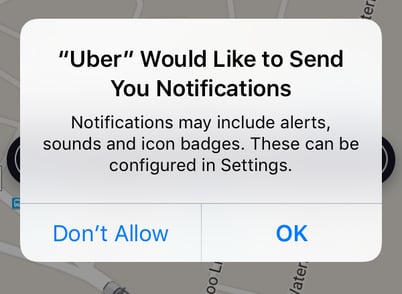
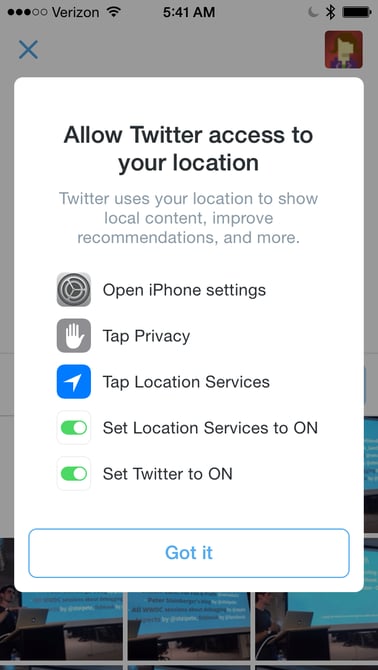
The Two Most Common Approaches 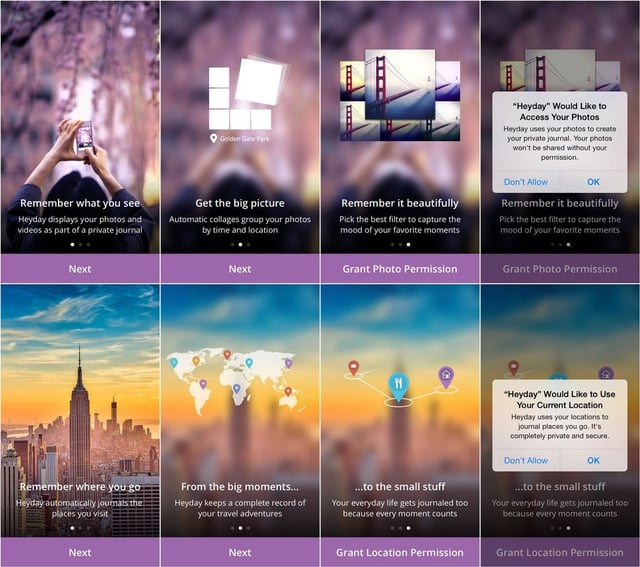
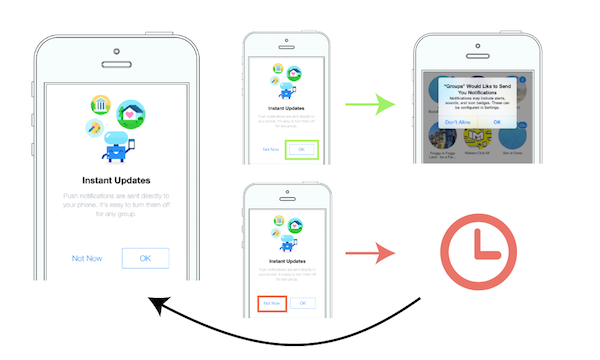 Source: Localytics
Source: Localytics
ii. Don't spring direct in there
3. Gear up certain criteria 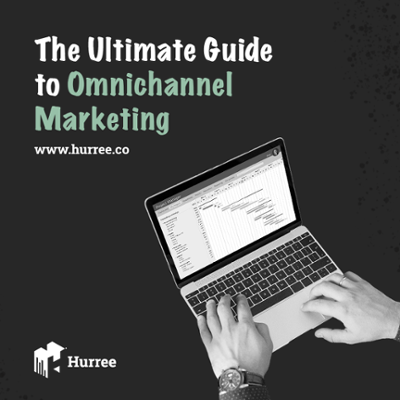
4. Show value with your permission request
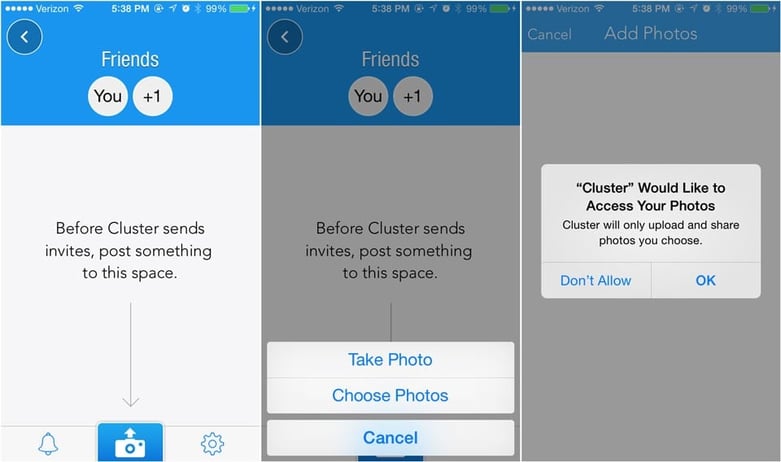
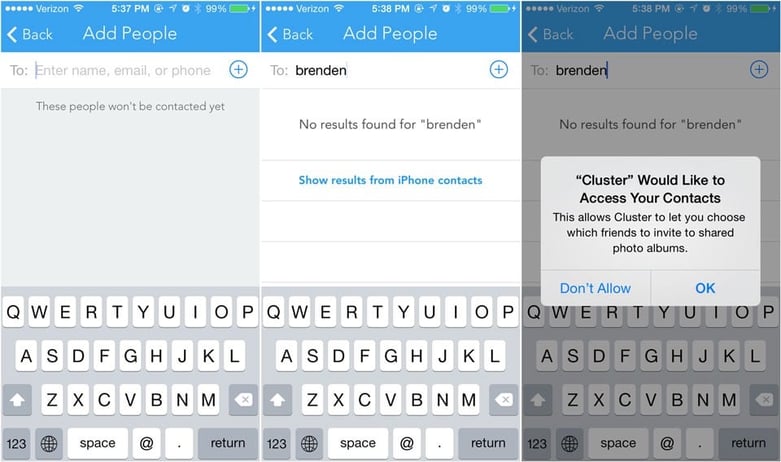

5. Go along testing If you're struggling to become an omnichannel brand, why not book a demo of Hurree's data unification and segmentation platform hither or email whatsoever of your questions to me atemma@hurree.co. Information technology's time to get your tools talking and nosotros tin can aid you do it!
Source: https://blog.hurree.co/blog/ios-push-notification-permissions-best-practises
0 Response to "Ios Ask for Push Notification Permission Again"
Post a Comment